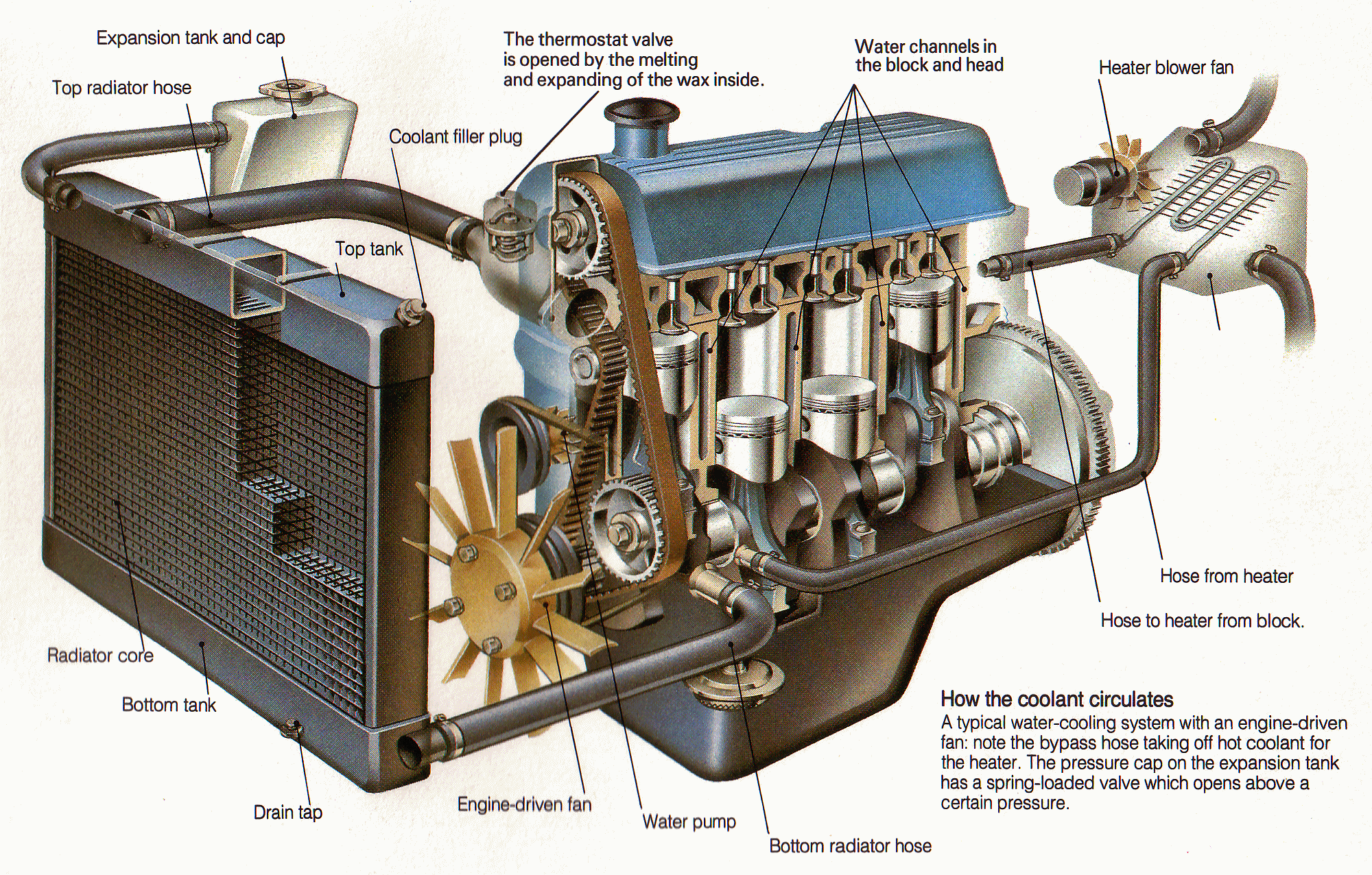It is said that perhaps 70 percent of the energy a gasoline engine produced is converted into heat and the heat created by a car driving down the freeway is enough to heat two average-sized houses! Your cooling system takes care of the heat and protects your engine from overheating to avoid inner damage. It maintains a safe engine temperature to ensure its operating efficiency. Besides, it regulates the temperature inside the passenger compartment to offer a comfortable environment. Basically, there are 10 components regarded your cooling system. They are coolant, water pump, radiator, hoses, thermostat, radiator cap, drive belts, heater core, fan clutch, and hose clamps. Coolant, circulating the entire cooling system is perhaps the most vital part of the system. It is a liquid mixture of antifreeze and water, the proportion at most time is even and the percentage of antifreeze needs to be increased during cold winter. It is designed to retain important properties-anti-freeze, anti-boil and anti-corrosion. The color is usually red, green, blue, or yellow. Water pump, it is the one that pushes the coolant through the passages in the radiator and your engine. Radiator is the place where the heat coolant carries id transferred to cooler ambient atmosphere. Hoses, which connect main components of cooling system, allow the free flow of radiator fluid. Thermostat, attached either on the upper or lower radiator hose, is a spring-loaded valve with a predetermined temperature to regulate the flow of coolant from your radiator to your engine. Radiator cap is actually a pressure cap, which increases the boiling point of the coolant by maintaining a constant pressure on the cooling system and ensures a consistent flow of fluid. Drive belts, rubber belts that transmit drive from an engine to various engine accessories such as water pump and cooling fan. Heater core is a small radiator hot coolant flowing through to provide warmth to the cabin. Fan clutch decreases drag on the engine by reducing cooling fan speed. Hose clamps secure components of cooling system together to create leak-proof seals.
The most noticeable symptoms of a sick cooling system are overheating, leaks, a sweet smell of antifreeze and repeatedly needing to add coolant. Your temperature warning light lies there to indicate you of an engine overheating while leaks and antifreeze abnormal smell can be easily noticed. Perform regular checkups of belts, hoses, the water pump and fluids, as well as maintenance such as coolant changes to keep your engine running at an optimal state.
However on matter how well you have maintained, with car service time calculating, from time to time, your car can experience different troubles related to cooling system, as well as other car components, parts and systems. Launch CRP 229 is a small-sized personal diagnsotic tool developed by LAUNCH to meet more profound diagnostic demand from DIY market. Based on Android OS,and integrated with OBD&EOBD standard protocols,it supports basic diagnostic functions for all car systems. It is a powerful professinal tool suitting DIY market well. If you are interested in this tool, please click the product image below the passage.

Does the cooling system really matters?
by
Tags:
